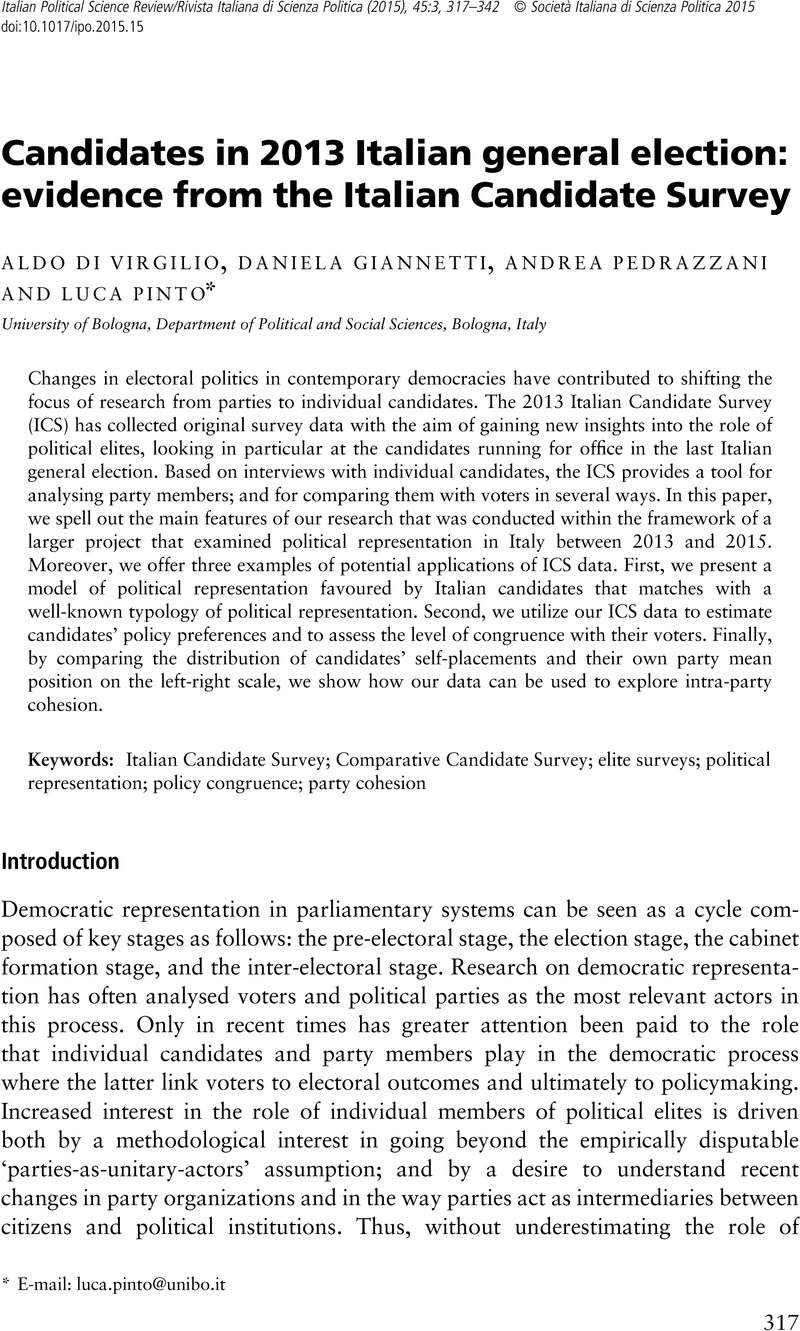Crossref Citations
This article has been cited by the following publications. This list is generated based on data provided by Crossref.
Giannetti, Daniela
Pedrazzani, Andrea
and
Pinto, Luca
2017.
Party System Change in Italy: Politicising the EU and the Rise of Eccentric Parties.
South European Society and Politics,
Vol. 22,
Issue. 1,
p.
21.
Di Mauro, Danilo
and
Verzichelli, Luca
2019.
Political elites and immigration in Italy: party competition, polarization and new cleavages.
Contemporary Italian Politics,
Vol. 11,
Issue. 4,
p.
401.
Giannetti, Daniela
Pedrazzani, Andrea
and
Pinto, Luca
2019.
Personal Ambitions, Expertise and Parties’ Control: Understanding Committee Assignment in the Italian Chamber of Deputies.
Parliamentary Affairs,
Vol. 72,
Issue. 1,
p.
119.
Vandeleene, Audrey
and
De Winter, Lieven
2019.
Candidates, Parties and Voters in the Belgian Partitocracy.
p.
1.
Russo, Federico
2021.
Going Local: Parliamentary Questions as a Means of Territorial Representation in the Italian Parliament.
Political Studies Review,
Vol. 19,
Issue. 3,
p.
410.



